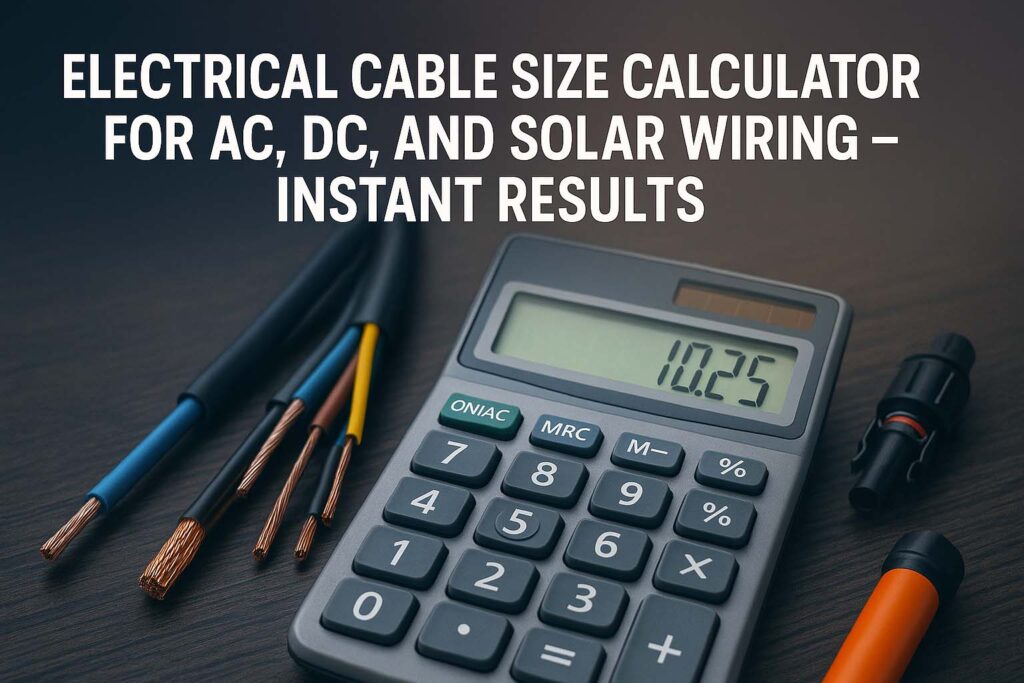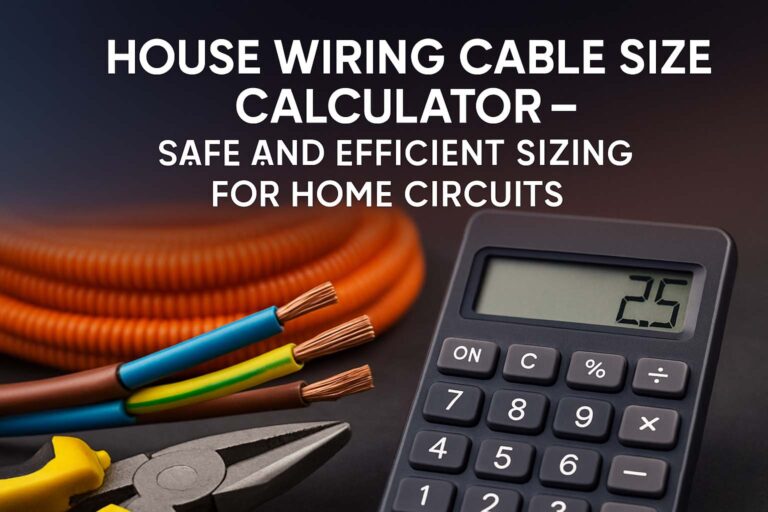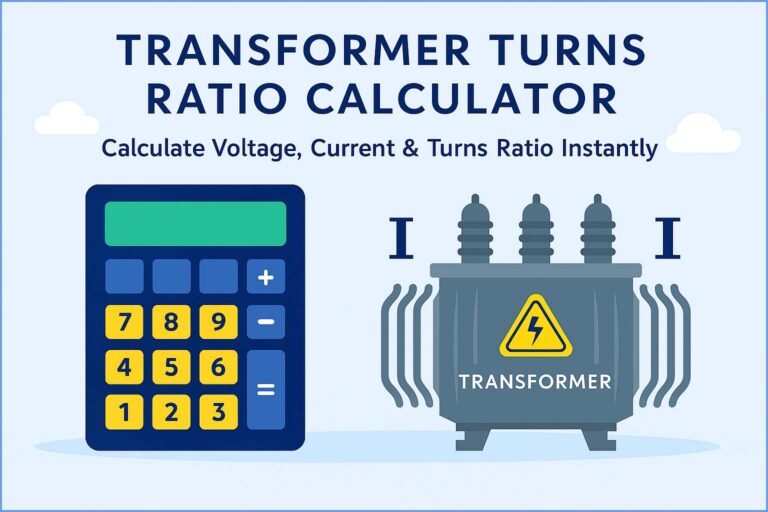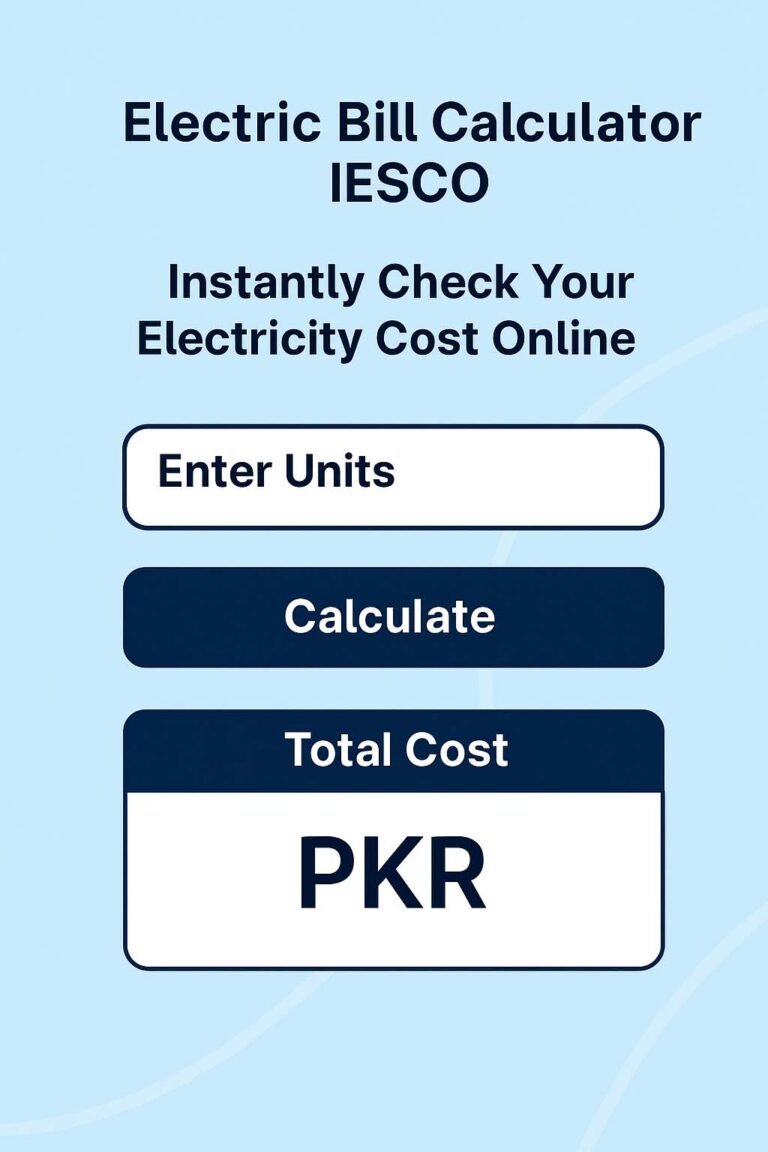Electrical Cable Size Calculator for AC, DC, and Solar Wiring – Instant Results
Choosing the right cable size is one of the most critical steps in any electrical wiring project. Whether you’re installing home wiring, a DC battery system, or a solar power setup, getting cable sizing wrong can lead to serious performance issues or even fire hazards. This is where an electrical cable size calculator becomes essential. It takes the guesswork out of the process and ensures safety, efficiency, and compliance with standards.
Table of Contents
Table of Contents

In this article, we’ll explore how cable sizing works for AC, DC, and solar circuits. We’ll explain how voltage, current, length, and load affect wire size selection. You’ll also get access to tables and key insights that will help you understand how to use a solar cable sizing or AC wire size calculator for accurate results.
Why Accurate Electrical Cable Sizing Matters
When you use the wrong cable size:
- Voltage drops excessively
- Heat builds up in the wire
- Energy losses increase
- Appliances get damaged
- Safety is compromised
Using a reliable electrical cable size calculator ensures that your wiring is safe, cost-effective, and long-lasting. It also ensures that your system meets IEC or NEC standards, which is especially important in commercial and regulated installations.
Use our online tool for free What Gauge Wire Do I Need? Free Online Calculator for Electricians & Homeowners
How Cable Size Is Determined
Cable size is based on several key parameters:
- Current (Amperes): The higher the load current, the thicker the wire required.
- Voltage (V): AC and DC circuits behave differently. DC systems generally need larger cables for the same load due to constant current flow.
- Distance (Length in meters or feet): Long distances increase resistance, causing more voltage drop.
- Voltage Drop Limit (%): Most standards allow 2% to 5% voltage drop depending on the system type.
- System Type: Single-phase, three-phase, or DC all have different calculation formulas.
- Cable Type and Insulation: Different cables (e.g., copper or aluminum) and insulations (e.g., PVC or XLPE) have different resistance and ampacity.
A smart solar cable sizing calculator will consider all these variables.
Electrical Cable Size Calculator for AC Circuits
Understanding AC Cable Sizing
In AC systems, both single-phase and three-phase configurations are common. Let’s take a look at the basic formula used to calculate cable size:
Voltage Drop (V) = (√3 × I × L × R) / 1000 (for three-phase)
Voltage Drop (V) = (2 × I × L × R) / 1000 (for single-phase)
Where:
- I is the current in amperes
- L is the length of cable in meters (one-way)
- R is the resistance of the conductor (ohm/km)
- √3 is used in three-phase calculation
Sample Table – AC Copper Cable Sizing (Single-Phase)
| Load Current (A) | Cable Length (m) | Cable Size (mm²) | Voltage Drop (%) |
|---|---|---|---|
| 10A | 20m | 2.5 mm² | 1.7% |
| 16A | 30m | 4 mm² | 2.3% |
| 32A | 50m | 10 mm² | 2.1% |
| 50A | 80m | 16 mm² | 2.4% |
Always keep your voltage drop under 3% for residential and under 5% for industrial setups.
Use our online tool for free NEC Wire Size Calculator – Voltage Drop Compliant Sizing for 120V & 240V Circuits
Why Use an AC Wire Size Calculator?
Manual calculation is time-consuming and error-prone. An AC wire size calculator simplifies the process. You just input:
- System voltage
- Load current
- Cable length
- Phase type (single or three-phase)
It instantly gives you the recommended cable size with acceptable voltage drop values.
Solar Cable Sizing – Special Considerations
Why Solar Cable Sizing is Different
Solar PV systems operate on DC and involve unique factors:
- Panels produce power in low voltage and high current.
- Voltage drop in DC circuits is more sensitive.
- Systems often have long cable runs between panels, charge controllers, and inverters.
- Cables are usually exposed to outdoor elements and must meet UV and weather-resistant standards.
DC Cable Sizing Formula
Voltage Drop = (2 × I × L × R) / 1000
Same as single-phase AC, but with constant polarity and higher sensitivity to drop.
Sample Table – DC Solar Cable Size (12V System)
| Load (W) | Current (A) | Cable Length (m) | Recommended Cable Size (mm²) |
|---|---|---|---|
| 120W | 10A | 10m | 6 mm² |
| 240W | 20A | 15m | 10 mm² |
| 360W | 30A | 20m | 16 mm² |
| 600W | 50A | 30m | 25 mm² |
Use our online tool for free Wire Size Calculator by Load and Length – Accurate Amp Sizing for Home Wiring
Benefits of a Solar Cable Sizing Calculator
A solar cable sizing calculator removes the complexity of dealing with:
- High current at low voltage
- Panel array configuration
- Inverter specs
- DC-to-AC conversion losses
It ensures that your PV system runs efficiently, with minimal power loss and no overheating issues.
DC Cable Sizing for Batteries and EV Systems
Battery banks, RV setups, and off-grid systems also use DC cable sizing. The current in these systems is usually high, especially during peak charging or inverter output. Cable runs from batteries to inverters must be kept short, or thicker cables must be used to avoid a serious voltage drop.
For example, a 2000W inverter running on a 12V battery draws around 167A. At 3 meters, the cable size needed is 70 mm² or more, depending on the acceptable voltage drop.
That’s why using a DC electrical cable size calculator is not optional—it’s essential.
Factors That Affect Cable Size Beyond Amps
While current and distance are major factors, don’t ignore these:
- Ambient Temperature: Higher temperatures reduce current-carrying capacity.
- Bundling: Multiple cables together generate more heat, requiring derating.
- Installation Method: Cable buried underground, in conduit, or in free air behaves differently.
- Material Type: Copper has lower resistance than aluminum.
Many professional electrical cable size calculators now include these variables for more precise results.
Advantages of Using an Electrical Cable Size Calculator
Here’s why professionals and homeowners rely on cable calculators:
- Eliminates complex math
- Prevents under-sizing and over-sizing
- Ensures compliance with standards (NEC, IEC, IEE)
- Saves time on design and estimation
- Helps select proper breaker and fuse size
- Optimizes solar system performance
With just a few inputs, you get reliable output in seconds. Most calculators also let you choose between metric (mm²) and AWG units.
Use our online tool for free Solar System Sizing Calculator for Agriculture & Tubewells
Final Words – Instant Results With Smart Cable Sizing Tools
Choosing the right cable is no longer a manual task filled with guesswork. A powerful electrical cable size calculator for AC, DC, and solar applications gives you instant and reliable results. Whether you’re an electrician, solar installer, or DIY enthusiast, using a cable calculator ensures you choose safe and efficient wire sizes every time.
Use our online tool for free Backup Generator Sizing Calculator
In AC circuits, the AC wire size calculator simplifies three-phase and single-phase sizing. For off-grid and rooftop setups, solar cable sizing becomes crucial. When designing a battery bank or EV setup, the DC cable calculator gives you precision where it matters most.
Follow Us on Social:
Subscribe our Newsletter on Electrical Insights for latest updates from Electrical Engineering Hub
#ElectricalCableSizeCalculator, #CableSizing, #ACWiring, #DCWiring, #SolarCableSizing, #ElectricalCalculator, #WireSizeCalculator, #SolarWiring, #HomeWiring, #ElectricalDesign, #AmpacityCalculator, #VoltageDrop, #ElectricalLoad, #ElectricalTools, #InstantCableSizing
Electrical Cable Size Calculator for AC, DC, and Solar Wiring – Instant Results : Electrical Engineering Hub

Use our free Electrical Cable Size Calculator to find the perfect wire size for AC, DC, and solar wiring. Get instant, accurate results for voltage drop, load, and safety compliance in electrical and solar installations
Price Currency: USD
Operating System: All
Application Category: UtilitiesApplication






